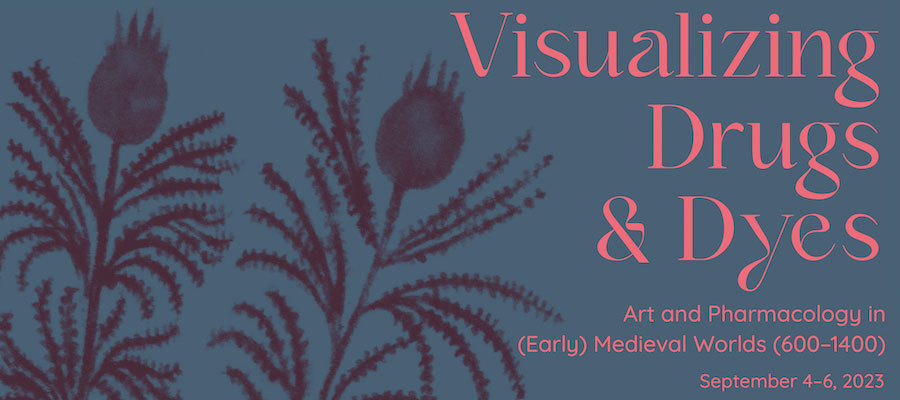Visualizing Drugs & Dyes. Art and Pharmacology in (Early) Medieval Worlds (600–1400), University of Basel and Zoom, September 4–6, 2023
Plants have long shaped the material practice and imagination of pharmacy. Far more than animals or minerals, plants and their products were central to medicine in premodern epistemologies. Over centuries, images and imaginings of vegetal materia medica played a profound role in human conceptions of and interactions with the natural world. In many ways, they continue to do so. Conversely, the therapeutic efficacy of plants and their products impacted broader visual and material cultures and practices. Thus, premodern pharmacological techniques interacted with the practices of image-making, artistic processes, and art.
Notwithstanding this close, underlying relationship between art and pharmacology in surviving medieval texts on healing and pharmacy produced between the 7th- 14th century, visualizations of medical substances have not yet sufficiently been the focus of art historical studies. Images of plants and their pigments and dyes, invite further investigations into their epistemic status as well as their therapeutic, and mimetic capacities. What forms of knowledge do these images, materials, and substances provide? What audiences do they address? How can they be situated, between the practices and interests of scribes/painters, scholars, nuns and monks, physicians, apothecaries, gardeners, rhizotomes, and also readers – while taking into consideration the changing status of these human actors across society, gender, time, and space? What can such images, materials, and substances tell us about the interconnections between human and vegetal worlds? What role do colors, pigments and dyes, scent or the incorporation of prayers and charms play in the creation of images of healing? Moreover, how does medicinal, pharmacological or toxicological, plant-related knowledge circulate across vast (plant) geographies? The conference wants to connect the representations of simplicia such as ginger, plantain, pennyroyal, saffron, artemisia, liquorice, or strawberry from cities, rural communities, courts, and religious congregations in the Indo-Pacific, the so-called Levant, the Black Sea, the Mediterranean, and the Medieval West.
Advance registration required for Zoom participation.
